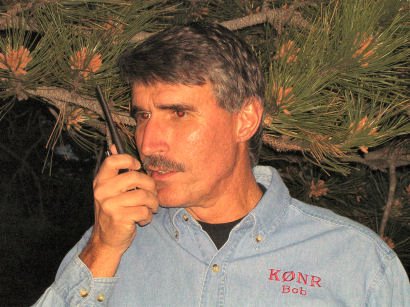Use that New HF+6m Rig on 6 meters
Colorado just experienced a nice 6M sporadic-e opening. Phil N0KE sent out this article as encouragement to try 6 Meters.
A few years ago we started seeing new HF rigs with 6 meters included, and at the 100 watt level in many cases. At the Central States VHF Conference in July 1998, it was claimed that world wide there are now 30,000 more stations with 6 meter capabilities. In the ARRL June 1998 VHF contest, several stations exceeded 1,000 QSOs on 6m and about half the all time top QSO totals were made this year, which would indicate a lot of these rig owners are using them on 6m.
You may have an existing antenna that will function on 6m. Obviously the best thing to do would be to put up a 6 meter yagi and an advantage is that they are small and light and you may be able to add it on an existing tower. For those who want to try out the band without making the commitment for buying a new antenna, you may be able to use an existing antenna. Most 15 meter antennas will work reasonably well on 6 meters. My TA33 tribander loads well. I’ve also tried the TH6DXX, TH7DXX tribanders and KLM 6 element 15 meter monobanders on 6 meters with reasonable results. You may have to use a tuner to get full power. I’ve found that a HF tuner in the 10 meter position will often work and the auto tunners in many rigs will work too. There are some inexpensive 6 meter antenna tuners made. A multi band vertical that covers 15 meters will also work, except one gentleman told me he fried the 15 meter trap on his R7000 in a matter of seconds at the 100 watt level on 6 meters. I've had good luck using a Butternut HF6V and HF9V on 6m. Most HF SWR and power meters are still reasonably accurate at 50 MHz. I’ve also worked some other stations using unusual antennas on 6 meters. I worked a New Zealand station who was using 10 watts to an 80 meter folded dipole. A 2 meter 5/8 wave vertical is very close to a ¼ wave on 6 meters and lots of people have used that mobile or like the guy in Dallas I worked who was using one on a magnetic mount on his bath tub. I never did find out why he was using the bathroom for his ham shack.
Since many of these HF+6 rigs, like the Icom 706 are very small, they are very attractive to take on that contest or vacation trip, especially when coupled with one of the light weight switching power supplies that will convert a wide range of AC voltages to 13.8 VDC. I easily carried my rig, power supply and laptop as carryon luggage on a KH6 trip for the 1997 CQWW SSB. You may end up in a country with little or no resident 6 meter activity and be much more in demand than on any of the HF bands. You can make some 6 meter QSOs even without packing along a 6 meter yagi, but do take the yagi if you can.
On 6 meters 50.000 to 50.100 is reserved for CW and contains many beacons. US beacons are mostly between 50.060 to 50.090. Most DX CW QSOs take place between 50.090 and 50.100. 50.100 to 50.125 is the DX window in the USA with 50.110 being the international DX calling frequency. In Europe the DX window is 50.100 to 50.130. The USA domestic calling frequency is 50.125. In Europe the domestic or inter Europe calling frequency is 50.150. Six meters is like other VHF bands in that SSB and CW are used in the same portions of the bands. Experienced expeditioners like W6JKV will constantly switch back and forth from CW to SSB on the same 6 meter frequency. Cross mode QSOs are also common.
We are in the spring sporadic E season that runs from mid May to late July or early August. Whether you are doing E mail or watching TV etc turn the rig to 50.125, turn up the squelch. If anything is happening, you will most likely hear it first on 50.125. Once the band is open move above the calling frequency for QSOs. I've found activity up above 50.250 on good openings. Another clue is if you are hearing very strong E (short) skip on 10m, chances are very good that 6m is open in the same direction. E skip is typically between 700 and 1400 miles per hop. Double hop is fairly common and multi hop propagation of 4 or more hops is much less common. Last June I worked 27 JA stations one evening and two days later I worked 7 European stations. both of these openings were probably 4 or 5 hops. Generally you need a good gain antenna and power but a few Colorado stations did work the JAs and Europeans with 100w to good antennas last summer.
73 Phil N0KE



0 Comments:
Post a Comment
Links to this post:
Create a Link
<< Home